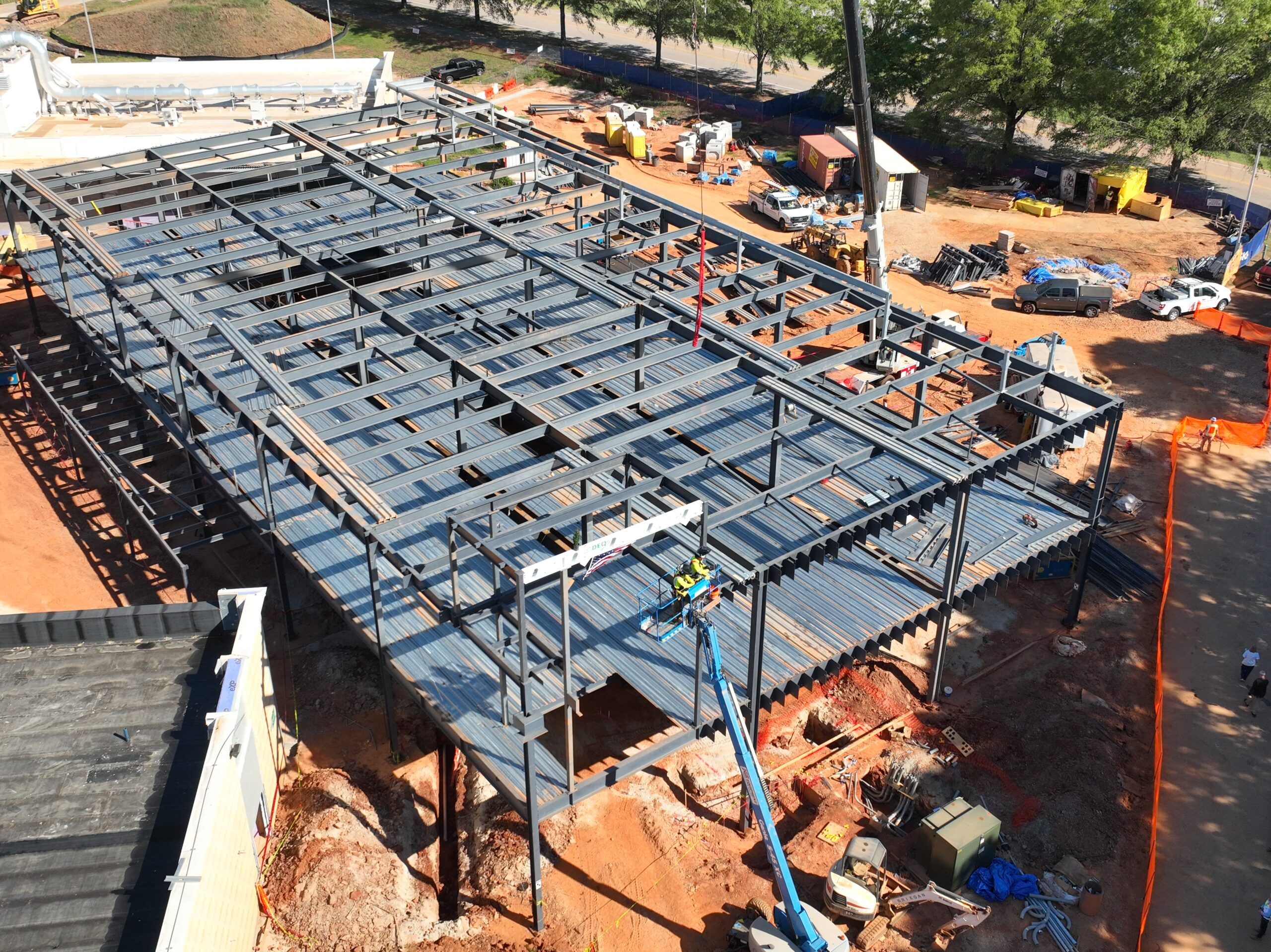
If you’re anything like us, you find tools inherently fascinating. It’s nearly unbelievable what humans have figured out how to do by combining natural resources and understanding physics. Today we’re going to look at just one tool: one element among countless others that represent human ingenuity—the air compressor. First, we’ll take a look at the basic information surrounding air compressors (what they are and how they work). Second, we’ll take a look at some of the bigger, more impressive jobs that can be done with them.
What Is An Air Compressor?
An air compressor is a tool that uses compressed air as an energy source. It can be viewed as something that takes electrical energy and converts it into kinetic energy. Air compressors come in all sorts of sizes and can be used for simple tasks like blowing up pool toys or tires to powering paint spray guns, nail guns, staplers, drills, impact wrenches, and sanders, just to name a few things. People are often drawn to an air compressor because it’s one of those devices that cuts down on your need for other devices; each tool no longer needs its own heavy motor that you need to store and maintain. Instead, you’ve got lightweight, compact tools that run quietly and far fewer parts that could wear out. Air compressors can be bought or rented depending on your needs.
How Do Compressors Work?
There are two main types of compressors. The first uses rotating impellers to create air pressure, and the second uses positive displacement to generate the compressed air (if you’ve encountered air compressors in the past, they were probably fueled by positive displacement as this is the more common one).
Similar to a small internal combustion engine, a standard compressor has a crankshaft, a connecting rod and piston, a valve head, and a cylinder. The crankshaft will be powered by an electric motor or a gas engine. Unless the compressor is very tiny, it will probably come with an air tank to hold the pressurized air safely. The motor typically will kick on and off automatically when it is needed to keep the pressure at the right level.
There will be a valve head at the top of the cylinder that has valves for taking in air and discharging air—typically nothing fancier than thin metal flaps mounted beneath and on top of the valve plate. When the piston moves down, a vacuum is created atop it, which allows outside air at regular pressure to push open the inlet valve and fill the space above the piston. Then, when the piston moves up again, the air compresses, holding the inlet valve shut and pushing open the discharge valve, and making its way into the tank. Each piston movement brings more air into the tank and increases the pressure.
For safety reasons, compressors will have a pressure switch at the top of the motor that keeps air from becoming dangerously pressurized. Often, the airline contains a regulator that can be set to match the pressure requirements of the specific tool you’re working with.
The final consideration you need to need to be aware of when using a compressor is that many are oil lubricated. This means the oil needs to be checked and changed to keep your compressor functioning and, given that piston rings are imperfect, there is the chance that some oil will get into the compressed air in an aerosol form. This isn’t too big of a deal unless you have paints or woodworking air tools that you’re using, and you want to be sure that the oil isn’t messing with the finish of your paint or the surface of your wood. There are oil-free options for these reasons.
What Are Industrial Air Compressors Used For?
You might have a firm grasp on what commercial, at-home air compressors can do with the above information. Maybe you’ve used a nail gun before or spray paint. Of course, there are larger, industrial air compressors that accomplish many fascinating and impressive tasks.
Steel Manufacturing
Steel is a crucial aspect of so many of humanity’s accomplishments. Some would go so far as to say we wouldn’t be where we are today without it. The ACE Group emphasizes that because steel needs both extreme heat and extreme cold in the process of production, industrial air compressors used in the steel industry have the additional task of handling the air and keeping it at the right temperature.
Agricultural And Farming Needs
In the world of farming, there are several machines that require the use of compressed air, including water pumps, crop sprayers, conveyors, pneumatic handling material machines, tractors, and greenhouse ventilation systems, even dairy machines. Industrial compressors are particularly valuable here because they can keep the air clean which is crucial if people are going to ingest something that the air touches.

Mining
Ventilation in mining tunnels is a vital consideration. Masses of air are an essential aspect of managing workspaces that extend for miles beneath the surface of the earth with a different atmospheric makeup than we’re used to on top of the ground. Air compressors are also a safer way of transporting energy beneath the ground that is more flexible than diesel or electric power locations underground. Industrial compressors used in mining have the additional focus of preventing the build-up of static electricity—everything needs to be grounded because there is the chance of methane in the air, which a single spark would react with catastrophically.
Of course, the above list is by no means complete. Countless industries use compressed air as a part of their daily work, including the: ash handling, standard oil and gas, aerospace, textiles, amusement parks, furniture, brewing, plumbing, glass, painting, engineering, woodworking, food and beverage, offshore, pharmaceutical, recycling, plastics, energy exploration, manufacturing, and automotive industries.
If you or your workplace is looking to incorporate compressed air into a project or business, ensure that all safety precautions are followed. You also want to be sure to have an audit done of the compressor every so often to ensure that everything is sealed up properly and you’re not losing any unnecessary air and, therefore, paying more than you need to for the energy your work requires.











